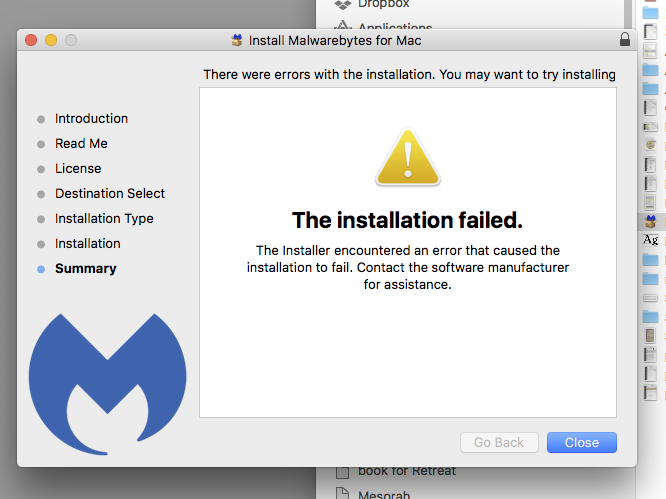How To Fix Installer Softwares For Mac
Posted : admin On 05.03.2020This section covers the installation of the PaperCut on Apple Mac systems. Before installing the client software, review and first ensure printing is working as expected. The PaperCut Mac User Client software is a supplied as a native Mac.app package. The User Client is delivered in two flavors:. The current client, which supports Mac OS X 10.7 (Mountain Lion) and above. The legacy client, which supports Mac OS X versions from 10.4 to 10.6. It is a universal application that runs on both PowerPC and Intel hardware.

The legacy client will not receive future feature enhancements. Apple has switched to a yearly release cycle for Mac OS X, which means it is difficult to keep this documentation up to date. For the most recent and up-to-date information on current best practices, see the. Note: The current version of the PaperCut client does not work on Mac OS X 10.6 and earlier.
How To Fix Installer Softwares For Mac Windows 10
For these systems the legacy client must be used. If the client fails to start, ensure you are using the correct client for your system. The legacy client is found in app-path/client/legacy. Use this path to locate the client when referenced in the following sections. The legacy client software works best if Java 5 (or higher) is installed. Java 5 is available for OS X 10.4 or above.
Usb mac controller driver. If Java is not already installed, the installer is available from the Apple website. This simplest way to install Java is to run /Applications/Utilities/Java Preferences from OS X Finder, and you are prompted to complete the installation. Single user install This method is suitable for a Mac computer used by a single user. For example, a personal Mac desktop or laptop. The installation process involves clicking the client-local-install program.
This copies the PCClient application into the over to the system's Applications folder and starts the client in the 'confirm network identity' mode. The simplest way to run the install process is to connect to a Windows server's pcclient share over the network, however, alternate methods such as copying the folder contents via a USB key or drive are also possible. To install the Mac User Client from a server's share:. Start and Log in to the Mac computer. Ensure it's connected to the network.

Open the Finder. In the Go menu, select Connect to Server. Enter password information if requested. Double-click the client-local-install file. This executes a small AppleScript program that starts the install/copy process.
(If installing on a legacy system (OS X 10.6 or earlier), you must install the legacy client located in the legacy folder.). Test the application by double-clicking the PCClient application icon in the system's local Applications folder. If the user needs the User Client for printing (for example, to use the popup), configure the application to automatically open upon start up:. Open System Preference from the Apple menu. Select Accounts.
Select your login account. Click the Login Items tab.
Click + then browse and select the PCClient application. Multi-user install On a multi-user Mac system, setting up a Login Item for each user would be a tedious task. To streamline this process, you can configure the PCClient application to start on login via the login hook. A login hook is an advanced Mac feature that works by running a script when a user logs in.
The PCClient package includes a command script resource that installs the login hook. To install the User Client on a multi-user system:.
Create Mac Installer
Start and log in to the Mac computer. Ensure the Mac computer is connected to the network.
Open the Finder. From the Go menu, select Connect to Server.
Enter the pcclient share's connection details, for example, smb://servername/pcclient. Enter password information if requested. Drag the PCClient (or legacy/PCClient on OS X 10.6 or lower) package to the local hard disk's Applications folder. The copy process begins. In the Applications directory, Control+click the newly copied PCClient application. Select Open Package Contents.
Important: If you're already using a login hook for other script tasks, the setup process is different. Instead in step 10, double-click the set-permissions.command file. Then insert the following line at the end of your current login script (all on one line): /Applications/PCClient.app/Contents/Resources/login-hook-start '$1' The set-permissions.command script ensures the software is set up with the correct permissions, making it accessible to all users. You can remove the login hook, once installed, with the terminal command: sudo defaults delete com.apple.loginwindow LoginHook. Zero-install deployment This deployment method is for advanced Mac network administrators and is suitable for medium to large Mac networks. Knowledge of the Mac's Unix underpinning and scripting is required.
A more flexible option over locally installing the PCClient package on each Mac system, is to directly launch the client from the pcclient share. The advantage of this deployment method is that any updates applied on the server (and updates to the client directory) are automatically propagated to all workstations. The process of setting up zero-install deployment varies from network to network depending on the directory environment in use and administrator preferences. The process can, however, be summarized as:. Configure the Macs to mount the pcclient share as a volume on login or start-up.
Configure a login hook to start the client off the share. The install-login-hook.command resource script explained in the multi-user install above might help. The typical way to mount the share is to use mountsmbfs in a boot script. See the Apple documentation on mountsmbfs at: Further information on Mac printing is available at.